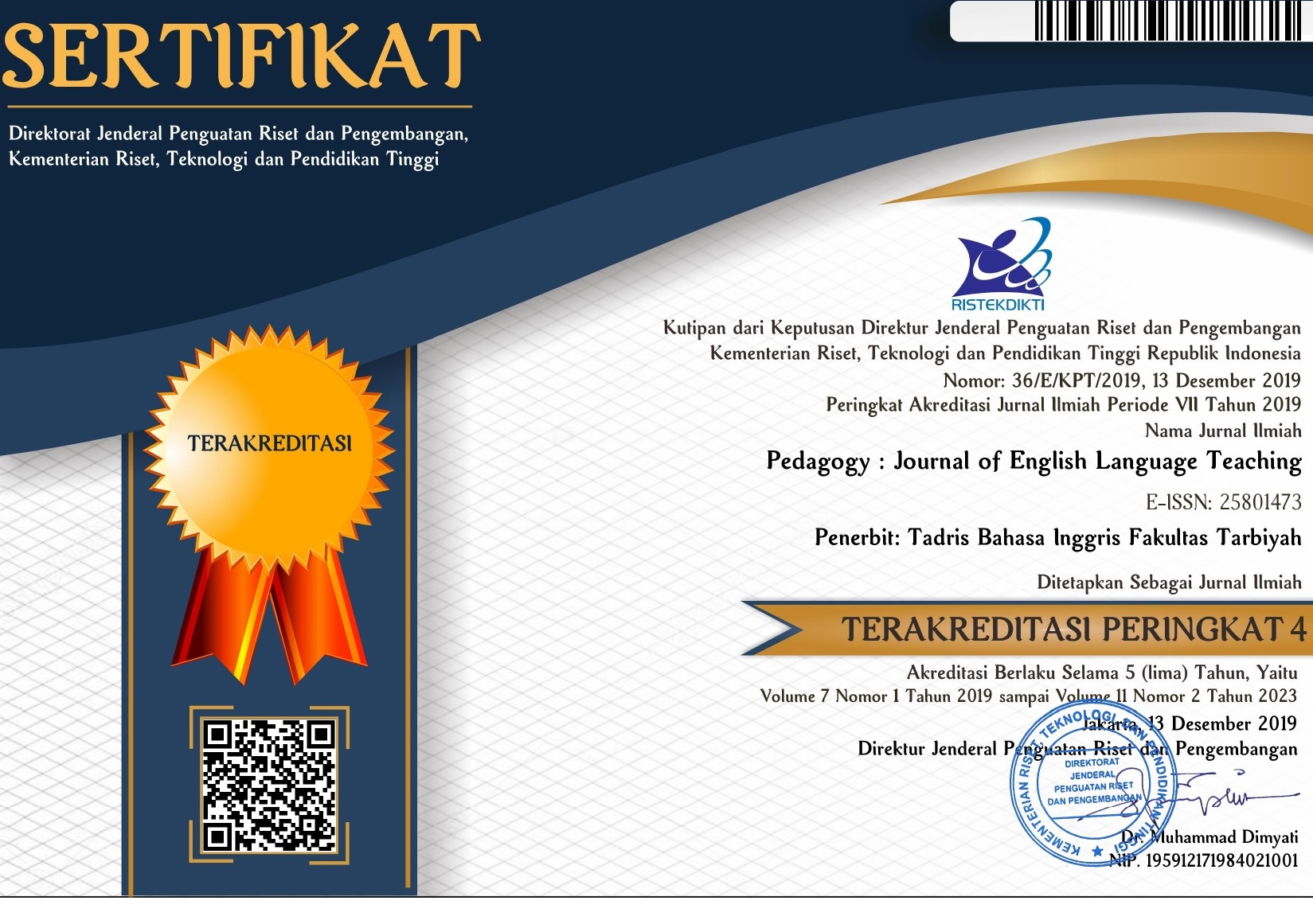English Needs of Occupational Safety and Health (OSH): The Multinational and National Companies’ Voice in Indonesia
DOI:
https://doi.org/10.32332/pedagogy.v7i2.1669Keywords:
English needs, Occupational Safety and Health, Job Recruitment, Multinational CompanyAbstract
The vast growths of multinational and national companies to world-class companies in Indonesia result in the advanced demand for English mastery in every working sector including Occupational Safety and Health (OSH). This article aims at investigating the needs and actual use of English in a working environment specifically at OSH. This research adopted mix method which use questionnaire and open-ended interview to obtain the data on the needs of English in OSH field matching to the prerequisite test in recruitment as well as the use of English from fifteen multinational and national companies. The result of the investigation revealed that English certification positioned as a prerequisite test and getting a high priority in job recruitment. When recruiting, companies expect at least an intermediate level for English. Recruits at least have to be able to manage communicative competence for daily conversation and perform a solid knowledge and skills of general OSH vocabulary. Productive skills are more required for communicating to expatriates, leading the meeting, doing a presentation, writing a report and designing Standard Operational Procedure (SOP). This research implies that in spite of position as the foreign language in Indonesia, English has a vital role in the working environment.















